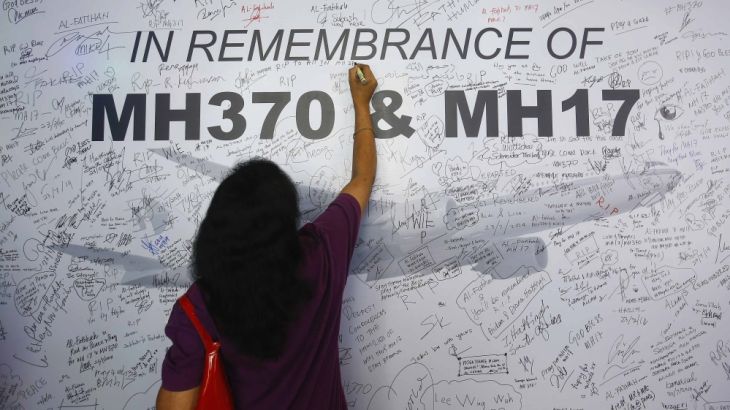Aviation mystery spawns conspiracy theories
Though evidence suggests the MH370 is at the bottom of the Indian Ocean, there is no dearth of outlandish explanations.

Apparently, Vladimir Putin has a plane whose livery has similar colours to those in Malaysia Airlines’ fleet.
“They” have been trying to get rid of Putin “for a while”.
Keep reading
list of 4 itemsHong Kong’s first monkey virus case – what do we know about the B virus?
Why will low birthrate in Europe trigger ‘Staggering social change’?
The Max Planck Society must end its unconditional support for Israel
But “they” made the wrong plane disappear.
Ridiculous? Indeed.
Far more likely is that it was the United Nations that made MH370 disappear, “because Malaysia wasn’t paying its UN fees and the UN wanted to teach the country a lesson”.
Or, perhaps, it was something to do with North Korea: some ill-defined dispute with China.
Or the US maybe: hijacking the aircraft because it was carrying a piece of secret Taliban equipment to China.
The plane, according to that theory, is hidden on the island of Diego Garcia.
Selection of theories
Conspiracy seeps into information vacuums and feeds off mystery.
The disappearance of MH370 with 239 people on board has spawned dozens of outlandish theories.
Those above are a selection offered by people I spoke to at an air show last week in Melbourne.
|
|
| “MH370 is being held on an island, UN is involved and Putin’s plane was real target …” |
With the sole exception of an aviation journalist, not one person I spoke to there said they believed the missing plane was at the bottom of the Indian Ocean.
And yet, what little evidence there is points to exactly that.
The “pings” heard by a satellite suggest the plane flew south along a defined arc across the southern Indian Ocean.
But exactly where it went down is impossible to say.
Did the pilot deliberately nose-dive the plane into the sea? Or did the plane run out of fuel and drop out of the sky?
If it did, did it then glide down to the surface of the ocean and land flat?
Or did one engine shut down before the other, causing it to spiral towards the water?
Each scenario would mean a different crash position; they could be hundreds of kilometres apart.
And then the wind and the water would have moved the wreckage more.
Difficult task
This week, I spent an afternoon at the company – Fugro – commissioned to hunt for the plane.
There I was shown the maps and the data.
The land-based search team explained just how difficult the task is.
Not only is the “priority” search area twice the size of Belgium, it’s possibly the least hospitable place on Earth.
The ocean is between four and six kilometres deep.
The seabed has underwater mountains, canyons – even volcanos.
In places, the silt at the ocean bottom is thought to be so thick, solid objects would simply sink into the murk.
Unless part of the plane is sticking through, sonar scanners would not spot it.
Despite that, those leading the search seem sure the plane will be found.
It’s hard to share their confidence.
Priority area
The search started with a priority area of the priority area – ie, before the search began, models suggested the plane was much more likely to be in the first 10 percent to be searched than in the last 10 percent.
The most likely 43 percent has now been searched, with nothing found.
If the weather is kind, the entire priority area should have been search by sometime in May.
If, by then, nothing is found, it seems likely nothing ever will be.
At least, not with the technology available today.
And if that’s the case, the conspiracy theories will only grow. However outlandish they are.